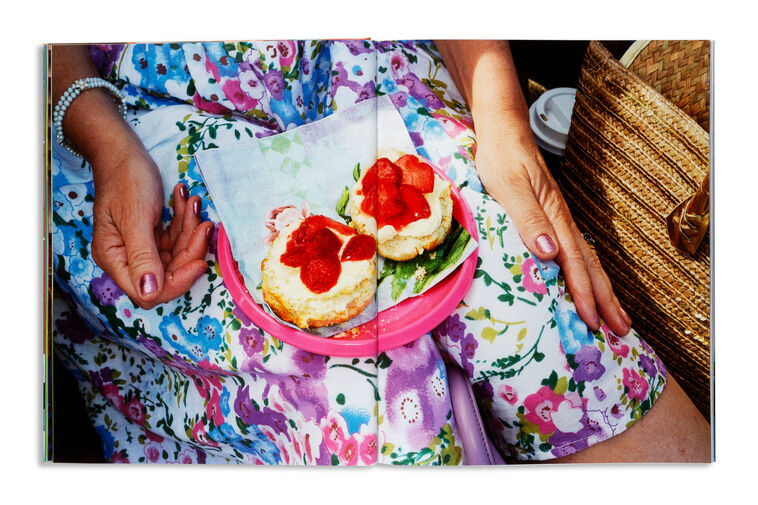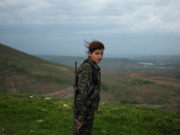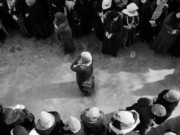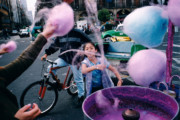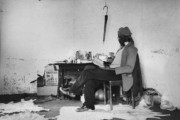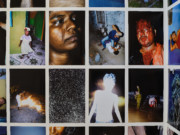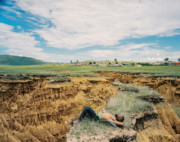Making Photo Books: Four Key Questions to Consider
Ahead of a deep-dive Magnum webinar on photo books, the event's panellists propose four questions to anyone considering creating their own
Eighteen years ago, photographer Martin Parr and curator Gerry Badger published The Photobook: A History, arguing for the importance of the form to the history of photography. Since then, interest in photo books has blossomed. More photographers are self-publishing, more small publishing houses and design studios are working with photographic artists, and there are now festivals and awards celebrating innovation in photo-book design.
In upcoming Magnum webinar, The Making of the Photo Book, Parr and Tate curator Yasufumi Nakamori will discuss the value photo collectors and curators place on photo books. Taking place over five sessions April 7–21, with a free panel discussion on April 6, the webinar will also see experts including specialist editors, designers and Magnum photographers exploring the creative choices they make – about paper, typefaces, image sequence, cover design – in producing their outstanding photo books.
Here are four questions that those experts would pose to anyone considering the path of photo-book creation.
What is your book about?
A photo book has to be more than a loose collection of photos. It needs a theme, a concept, a story. Art director Ramon Pez – who helped design The Afronauts by Cristina de Middel and Ponte City by Mikhael Subotzky and Patrick Waterhouse – says that only once he understands what the photographer wants to say can he help to shape the book’s visual narrative through editing and design.
For the upcoming webinar, Parr will show attendees layouts from a few of the dozens of books he has published, ranging from a small spiral-bound book to a softbound book with a shiny vinyl cover. All the examples, he says, “demonstrate how production values echo the [book’s] theme.”
Who is your audience?
Lesley Martin, creative director at Aperture and editor of more than a hundred books, notes that the target readership defines several parameters. One, for example, is the book’s budget. To reach a wide audience or appeal to young readers, the book needs a lower price. That means reining in production costs and page count.
Trade publishers, who expect to sell several thousands of copies of a book in order to turn a profit, like to see research on the sales of comparable titles. They are more likely to pay attention to book proposals if they show that there is a large, enthusiastic audience for the book’s subject.
Once they begin sequencing photos and designing layouts, photographers and designers need to think about the reader who will one day be turning the pages. The reader’s experience is “the filter to decide if a design solution or editing solution can work,” explains Pez. “Can the reader understand what we want to provoke with this image or this text in that position? If we choose a textured paper, what do we want to transmit to them in a tactile way?”
Photographer Sohrab Hura begins his first book, Life is Elsewhere, about his mentally ill mother, with a letter he wrote to a friend. “I don’t specify which friend,” he says. “I address it to ‘you.’ I think that was a way the reader could make the book theirs.” Hura reprinted the letter in his own handwriting, adding to the intimacy of the conversation between author and reader.
Are you willing to invest your time and money in your photo book?
Since photo-heavy illustrated books are costly to print, and typically sell less than a thousand, many publishing houses now ask photographers to pay for all or part of their production costs.
When photographers choose to self-publish their books, they shoulder all the costs. They control the design and production, and also handle promotion and sales. Hura has chosen to self-publish several photo books, doing everything from sourcing the material for a book’s cover to fashioning the containers in which he shipped copies to bookstores. It’s a process he admits can be “exhausting”.
How will you publicize your photo book?
Whether they work with a publishing house or self-publish, photographers are responsible for promoting their books to their communities and personal networks, as well as to groups interested in a book’s subject matter.
During a free panel discussion on April 6, members of the Magnum team will show promotional videos, zines, a clever variation on the typical book-signing, and other ways that photographers including Bieke Depoorter, Jonas Bendiksen, Matt Black have introduced their new books to the public.
Each photographer adopts their own promotional tactics, tailored to highlight what makes their book unique. The particular publicity strategy has to take inspiration from the story the photographer wants to tell and the readers they most want to reach.


